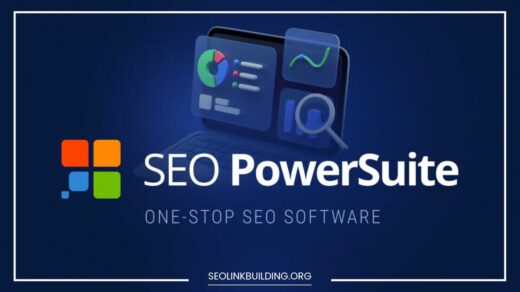Master the Art of SEO Content Writing: The Ultimate Guide

SEO Content Writing
Mastering the Art of SEO Content Writing: A Guide to Ranking Higher
In today’s digital battlefield, where information is the ultimate weapon, websites fight fiercely for user attention. Search Engine Optimization (SEO) acts as your strategic arsenal, ensuring your content ranks high in search engine results pages (SERPs).
But how do you craft content that resonates with both users and search engines? This comprehensive guide to SEO content writing equips you to create magnetic content that dominates the rankings.
The Powerhouse of SEO Content Writing
SEO content writing isn’t just about sprinkling keywords; it’s an art form. It’s about understanding what users crave, strategically incorporating relevant search terms, and structuring your content for search engine crawlability. Here’s why SEO content writing deserves a prominent place in your digital marketing strategy:
- Unveiling the Gates to Increased Visibility: Well-optimized content scales the SERP ladder, making it readily discoverable by your target audience actively searching for solutions you offer. Imagine a treasure map guiding users straight to your content – that’s the power of SEO.
- A Magnet for Organic Traffic Generation: Ranking high in search results translates into free, organic traffic – potential customers who are actively looking for the products or services you provide. It’s like having a constant stream of qualified leads visiting your website, eager to learn more about what you offer.
- Building Brand Credibility as a Thought Leader: High-quality content positions you as a trusted authority in your niche. Think of yourself as a sage offering valuable knowledge – users will come to rely on your expertise, fostering brand loyalty and trust.
- The Key to Improved User Engagement: Content that caters directly to user intent keeps visitors glued to your website. Engaged users are more likely to convert, leading to increased sales, subscriptions, or whatever your desired action might be.
The SEO Content Writing Process: A Step-by-Step Masterclass
Crafting content that excels in both user experience and search engine optimization requires a meticulous approach. Here’s a detailed breakdown of the key steps involved:
1. Keyword Research: The Bedrock of Your SEO Strategy
Keywords are the golden threads woven into the fabric of SEO. They are the search terms users type into search engines, acting as the bridge between your content and your target audience. Keyword research forms the foundation of your SEO strategy. Let’s delve into how to unearth these valuable keywords:
- Identify Seed Keywords: Brainstorm broad keywords that encompass your niche or industry. Think of these as the starting point for your keyword exploration.
- Unlocking the Power of Keyword Research Tools: Leverage free and paid tools like Google Keyword Planner, SEMrush, or Ahrefs to discover relevant keywords with significant search volume and lower competition. These tools act as your treasure map, guiding you towards the keywords with the most potential.
- Embrace the Power of Long-Tail Keywords: Don’t just focus on single-word keywords. Explore longer, more specific phrases that users with higher purchase intent are likely to search for. Long-tail keywords are like laser beams, targeting a very specific audience with a strong desire to convert.
- Analyzing the Competition: A Strategic Move: Research your competitor’s content to identify keyword opportunities and understand the ranking landscape. Analyze what they’re doing well (and not so well) to find gaps you can exploit with your own unique content.
2. Unveiling the Mystery: Understanding User Intent
Understanding what users are truly looking for when they search for specific keywords is paramount. Here’s how to get inside the minds of your target audience and craft content that resonates with their needs:
- Analyzing Search Queries: Take a deep dive into the types of questions and phrases users include in their searches. What specific information are they seeking? What problems are they trying to solve?
- Considering Different Search Intents: Users might be in various stages of the buyer’s journey – in the research phase, actively comparing options, or ready to purchase. Cater your content to their intent. If someone is just starting their research, provide informative content that educates them. If they’re nearing a purchase decision, highlight features and benefits that showcase the value proposition of your product or service.
- Brainstorm User Questions: Become a mind reader! Anticipate the questions your target audience might have related to your chosen keyword. What confusions or challenges might they be facing? Answering these questions head-on within your content positions you as a trusted advisor.
3. Content Planning and Topic Selection: A Strategic Roadmap
Based on your keyword research and understanding of user intent, brainstorm engaging content topics that deliver exceptional value to your audience. Here are some tips to ensure your content roadmap leads to SEO and user engagement success:
- Focus on Informative and Comprehensive Content: Don’t settle for mediocrity. Strive to create content that surpasses what’s already ranking for your target keywords. Think of it as building a skyscraper in a city full of bungalows. Your content should be the tallest structure, offering the most expansive and valuable information on the topic.
- Variety is the Spice of Content Creation: Experiment with different content formats to cater to diverse learning preferences and keep your audience engaged. Not everyone enjoys lengthy blog posts. Explore infographics, videos, case studies, and even interactive content formats like quizzes or polls to break the mold and provide a well-rounded user experience.
- Align Content with Your Marketing Funnel: Imagine your marketing funnel as a user journey – from awareness to consideration to purchase. Develop content that addresses users at various stages of their buying journey. Top-of-funnel content might focus on educating users about a broad topic. As users move down the funnel, create content that highlights specific features and benefits of your product or service.
4. Crafting Magnetic Content: The Art of Weaving Words
Now comes the magic of creating content that captivates both users and search engines:
- Write with Clarity and Conciseness: Avoid jargon and overly complex sentence structures. Use clear language, maintain a conversational tone, and break up text with subheadings and bullet points for better readability. Imagine you’re explaining a concept to a friend – that’s the level of clarity you should aim for.
- Integrate Keywords Naturally: Don’t force keywords into your content like square pegs in round holes. Instead, weave them in organically throughout the content, ensuring they flow seamlessly and add value to the reader’s experience. Keyword stuffing is a big turn-off for both users and search engines, so prioritize readability.
- Structure for Search Engines and Users: Utilize title tags, meta descriptions, and header tags (H1, H2, etc.) optimized with relevant keywords. Title tags and meta descriptions are like catchy headlines and summaries that entice users to click on your content in search results. Header tags act as signposts within your content, guiding users through the information hierarchy and improving readability.
5. Optimizing for User Experience: Keeping Visitors Engaged
SEO doesn’t stop at keywords and content structure. Here’s how to enhance the user experience and keep visitors glued to your website:
- Content Formatting: Break up text walls with visuals like images, infographics, and videos. Strategic use of visuals not only enhances understanding but also adds visual interest, making your content more scannable and engaging.
- Internal Linking: A Web of Connectivity: Link to relevant pages within your website to improve user navigation and increase time spent on your site. Internal linking helps search engines understand the structure of your website and the relationships between different pages. It also keeps users engaged by guiding them to explore other valuable content on your site.
- Mobile-Friendliness: A Must-Have in Today’s World: Ensure your content renders flawlessly on mobile devices, as a significant portion of searches now happen on smartphones. Responsive design is crucial to cater to today’s mobile-first audience. If your website isn’t mobile-friendly, you’re essentially shutting the door on a huge chunk of potential visitors.
- Fast Loading Speeds: Optimizing for Speed Demons: Optimize images and code to ensure your web pages load quickly. Nobody enjoys waiting for a website to load – slow loading speeds can lead to high bounce rates (users leaving your site immediately).
6. Content Promotion: Spreading the Word Beyond Your Website
Once your masterpiece of SEO-optimized content is published, don’t let it languish in the shadows. Here are some effective ways to promote it and amplify its reach:
- Social Media Marketing: A Powerful Amplifier: Share your content on social media platforms relevant to your target audience. Social media is a fantastic tool for sparking conversations, driving traffic to your website, and establishing yourself as a thought leader in your niche.
- Email Marketing: Reaching Directly into Inboxes: Include snippets of your content in your email newsletters. Email marketing allows you to nurture leads and connect with your audience directly. Promote your content alongside valuable industry insights or exclusive offers to incentivize clicks.
- Guest Blogging: Building Authority and Expanding Reach: Contribute guest posts to websites with high domain authority in your niche. Guest blogging allows you to tap into a new audience, establish yourself as an expert, and potentially earn backlinks to your website – all of which contribute to higher search engine rankings.
- Collaborations and Influencer Marketing: Partner with influencers in your industry to promote your content. Leveraging the reach and credibility of influencers can significantly expand your audience and drive targeted traffic to your website.
Measuring Success: Tracking Your SEO Content Performance
SEO content writing is an ongoing process. It’s crucial to track your progress and measure the effectiveness of your efforts. Here’s how to gauge your success:
- Website Traffic Analytics: Utilize website traffic analytics tools like Google Analytics to monitor key metrics like organic traffic, page views, and bounce rate. Analyze which SEO-optimized content pieces are generating the most traffic and engagement.
- Keyword Ranking Tracking: Track your keyword rankings over time using tools like SEMrush or Ahrefs. Observe how your content climbs the SERP ladder for your target keywords.
- Engagement Metrics: Look beyond just traffic and delve into engagement metrics. Analyze metrics like time spent on page, social media shares, and conversions (purchases, sign-ups, etc.) to understand how effectively your content is resonating with your audience.
- Backlink Profile Analysis: Backlinks are essentially votes of confidence from other websites. Monitor your backlink profile using tools like Moz or Majestic to see how many backlinks your content is acquiring and from what kind of websites. High-quality backlinks from reputable websites contribute significantly to higher search engine rankings.
Advanced SEO Content Writing Techniques: Taking Your Content to the Next Level
Once you’ve mastered the SEO content writing fundamentals, explore these advanced techniques to further refine your content strategy:
- Content Clusters and Topic Authority: Develop content clusters around a central theme, linking related articles and web pages together. This establishes your website as a topical authority on the subject, boosting your overall SEO performance. Imagine creating a web of interconnected content pieces that provide comprehensive information on a particular topic.
- Schema Markup: Providing Context to Search Engines: Implement schema markup to provide search engines with richer context about your content. This can lead to richer search results snippets, potentially increasing click-through rates. Think of schema markup as a cheat sheet for search engines, helping them understand the specific content and meaning of your web pages.
- Evolving with Search Engine Updates: Search engine algorithms are constantly evolving. Stay updated on the latest SEO trends and best practices to ensure your content remains optimized for search success.
The Future of SEO Content Writing: Embracing Emerging Trends
The SEO landscape is ever-changing. Here’s a glimpse into some emerging trends to keep on your radar:
- The Rise of Voice Search: As voice search technology continues to gain traction, optimize your content for conversational queries. People tend to use longer, more natural language phrases when searching by voice.
- Focus on User Experience and Expertise: Google prioritizes content that provides exceptional user experience and demonstrates expertise in its ranking factors. Focus on creating content that is not only informative but also trustworthy and authoritative.
- The Power of Visual Content: Visuals continue to play a crucial role in content marketing. Leverage high-quality images, infographics, and videos to enhance user engagement and improve search engine rankings.
Final Word: The Art and Science of SEO Content Writing
SEO content writing isn’t just about sprinkling keywords; it’s about crafting engaging, informative content that caters to both users and search engines.
By following these steps, mastering the techniques, and staying updated with the latest trends, you can create content that dominates search results, attracts qualified traffic, and fuels your digital marketing success.
Remember, SEO content writing is a continuous journey – keep experimenting, refine your approach, and watch your website climb the SERP ladder to reach the top.













